September ’22. Mekong Riverside. Mud.
It looks a bit like mud, the light that is in this city: dense, dusty and a bit murky, with a color that recalls the reflection of the Mekong, which acts as a natural border with Laos and scatters earth in the color of the air as much as in its waters, absorbing the gray of the clouds when it rains and casting golden coffee glimmers from the sun all around, in the rare moments when the sky opens and the Monsoon calms down.
It is an extraordinary time of year for Thailand: we are almost at the end of Buddhist Lent, and Nong Khai, the central city of the northeastern province of the same name, is one of the main places celebrating the end of this sacred period, which will end in a few weeks with the Naga Fireballs Festival, the natural event still unexplained by science that attracts tourists not only from all over Southeast Asia but from the entire world.
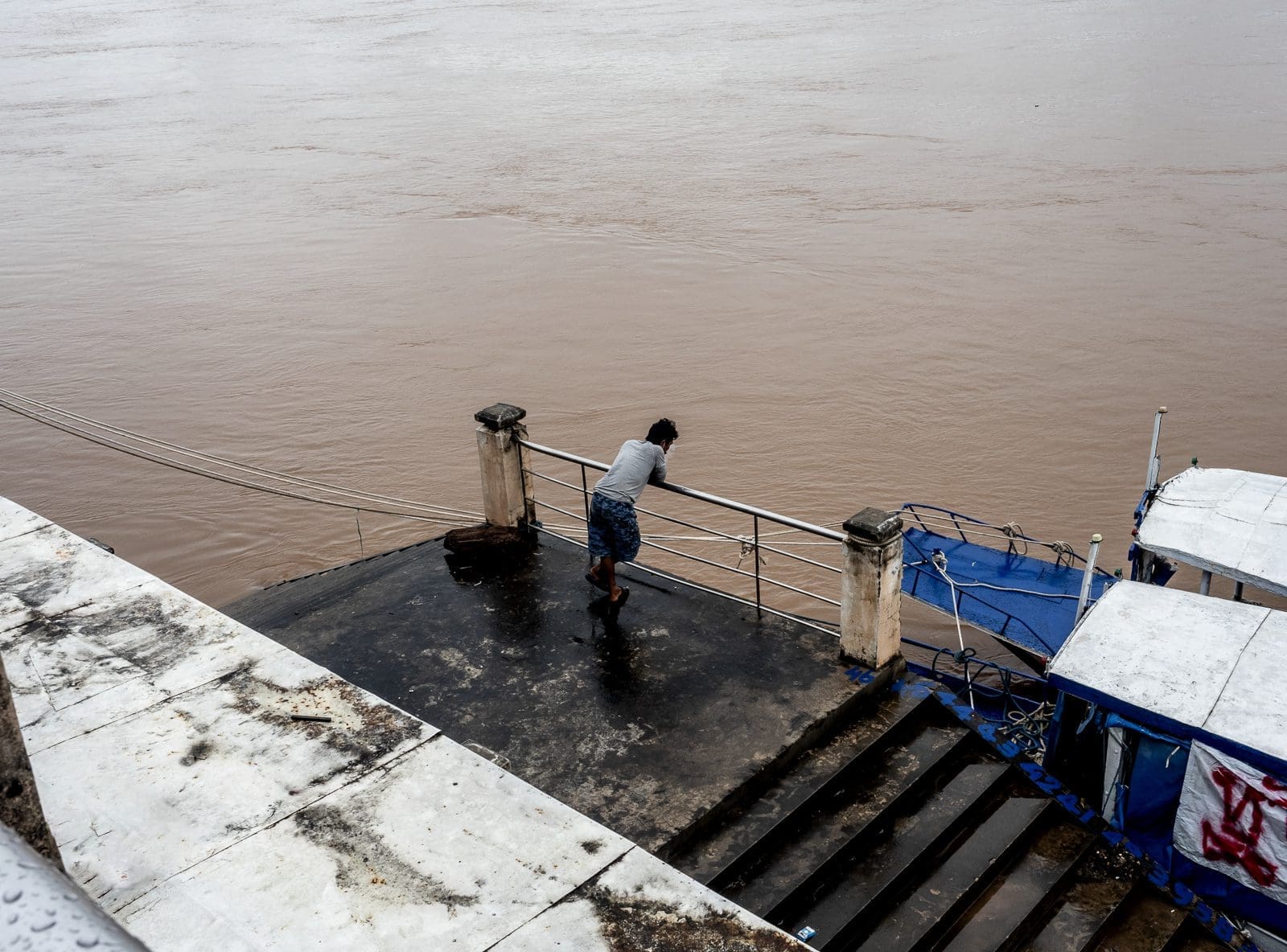
The Riverside, the heart of the city, is festively dressed: lights and paper flags are shining everywhere, signalling the expected attendance of many people; the square in front of the Mekong where the two sides of the Riverside converge is filled with chairs silently awaiting the people who will occupy them, and invitations to the Saturday Festival can be heard from one end of the Riverside to the other. However…
However, no matter how hard one tries to get into the festival’s spirit, something is not quite right here in Kong Khai. Of all the tourists who are supposed to be there this time of year, of all the people who are supposed to place their feet on these stones to witness the celebration of the festivities, there is not a single non-native person in the entire city. One sees native Thais from Nong Khai, Laotians working on this side of the river and crossing it daily, expatriates from Commonwealth states who have decided to come and spend their old age in Thailand and who, with all the emotion they are capable of, mourn the death of their beloved Queen Elizabeth II from the Irish pub benches that tap the Riverside in clover green, but no one else. No tourists, no travellers, no foreigners, no one who is simply passing through. Apart from the 4-5 people at a time (strictly Asians) that one can meet in the small shops overlooking the river or in the restaurants, the streets are empty. So all this preparation, all this organisation, all this enthusiasm, who is it for?
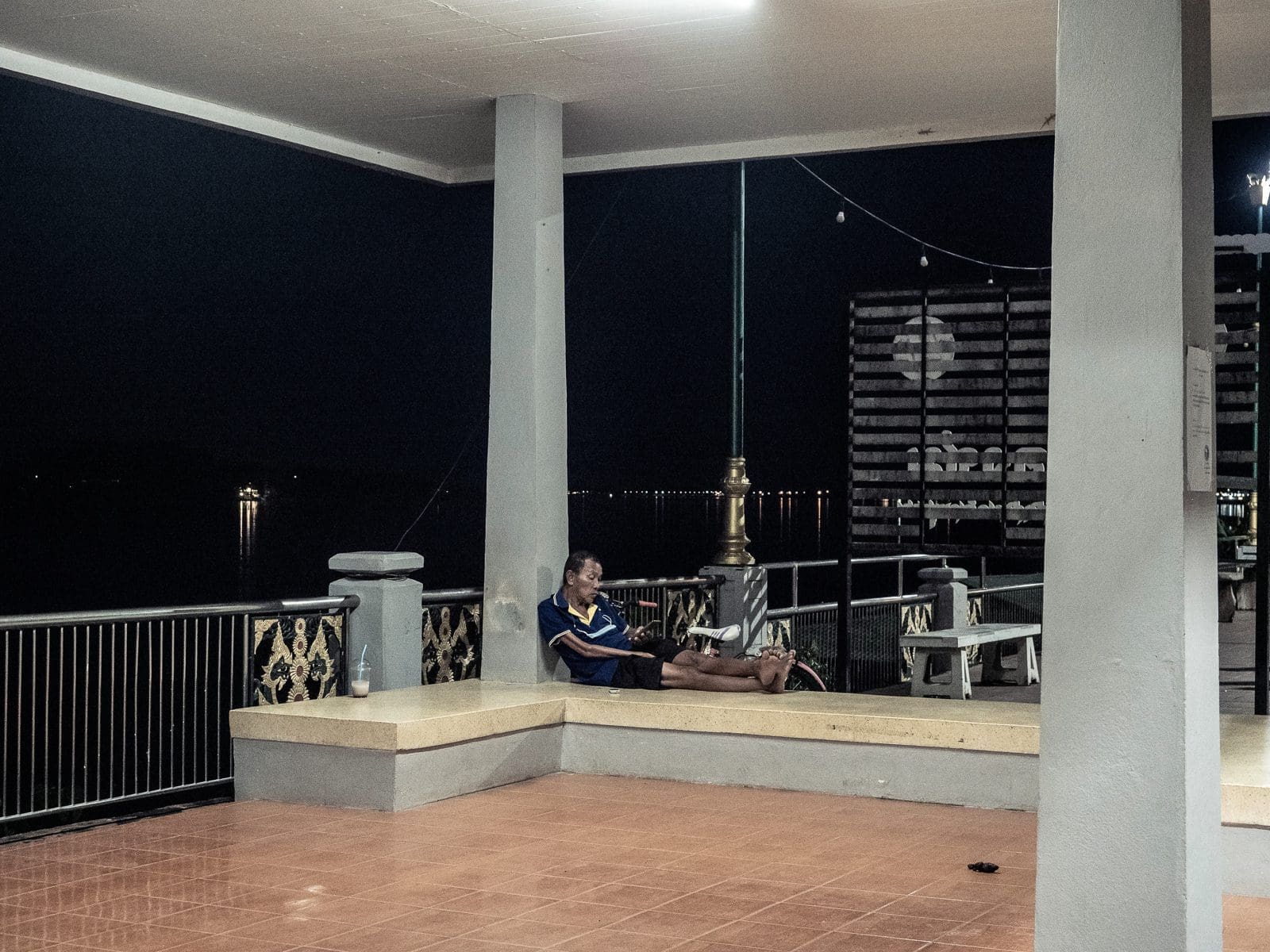
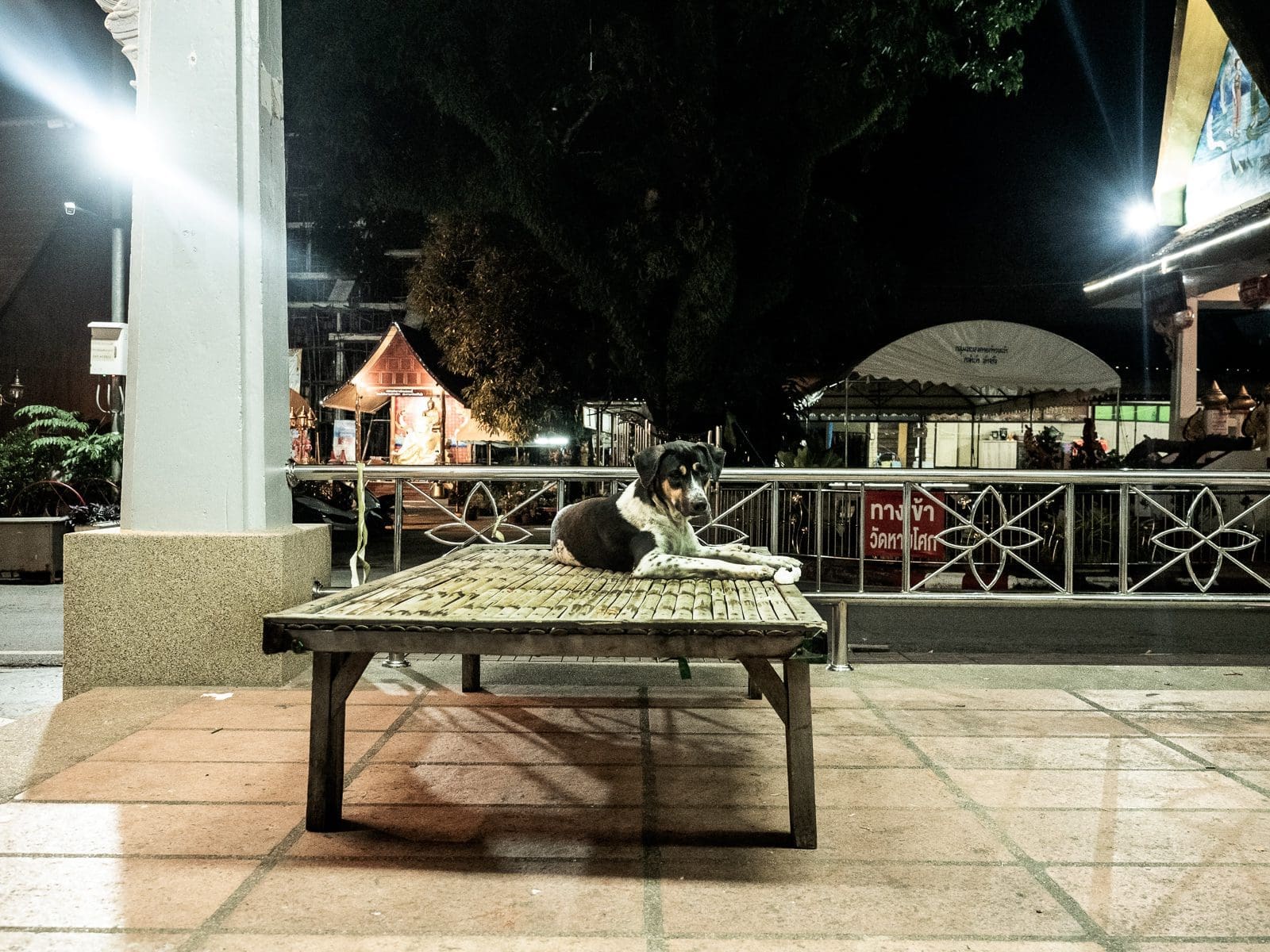

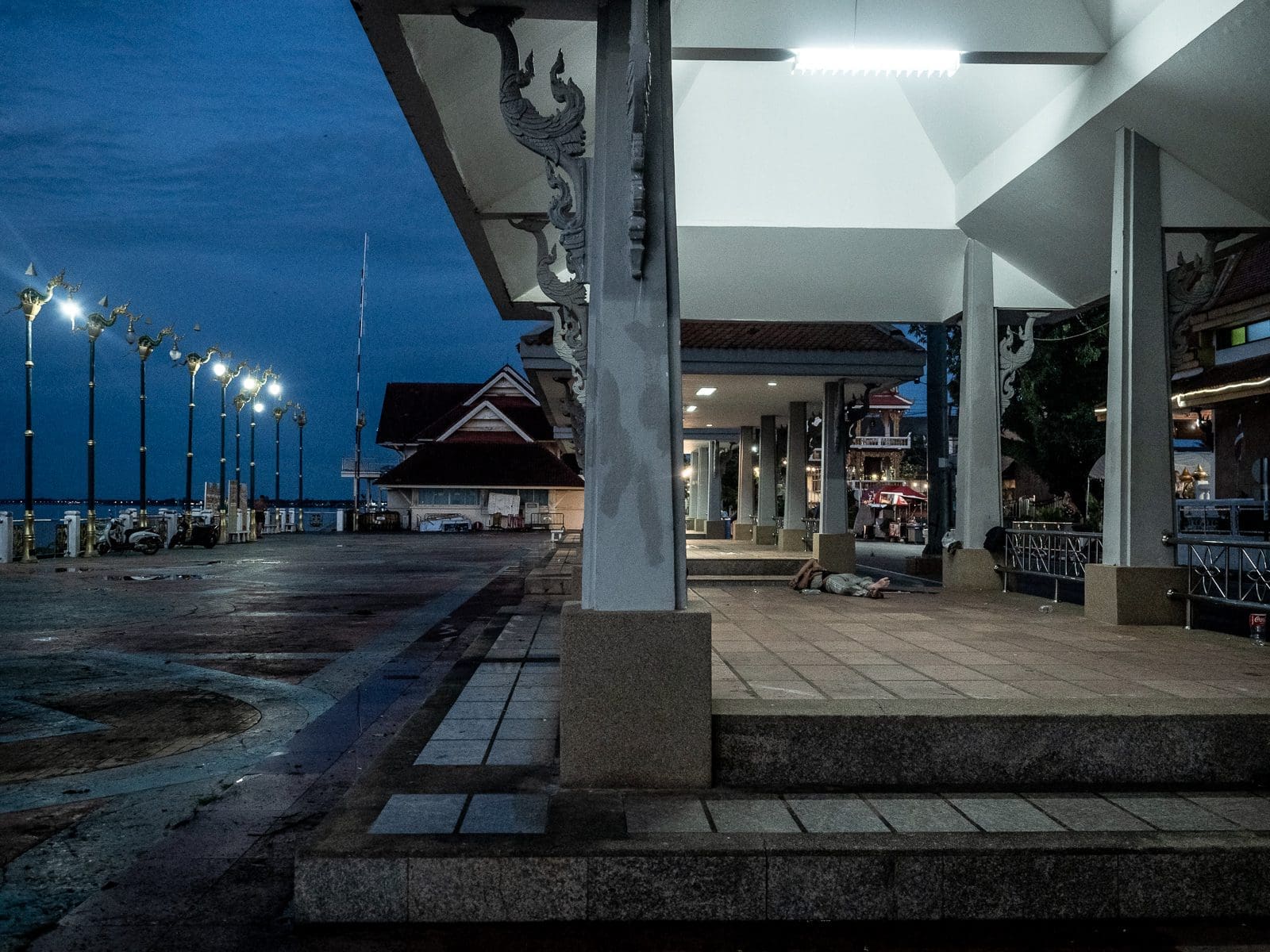
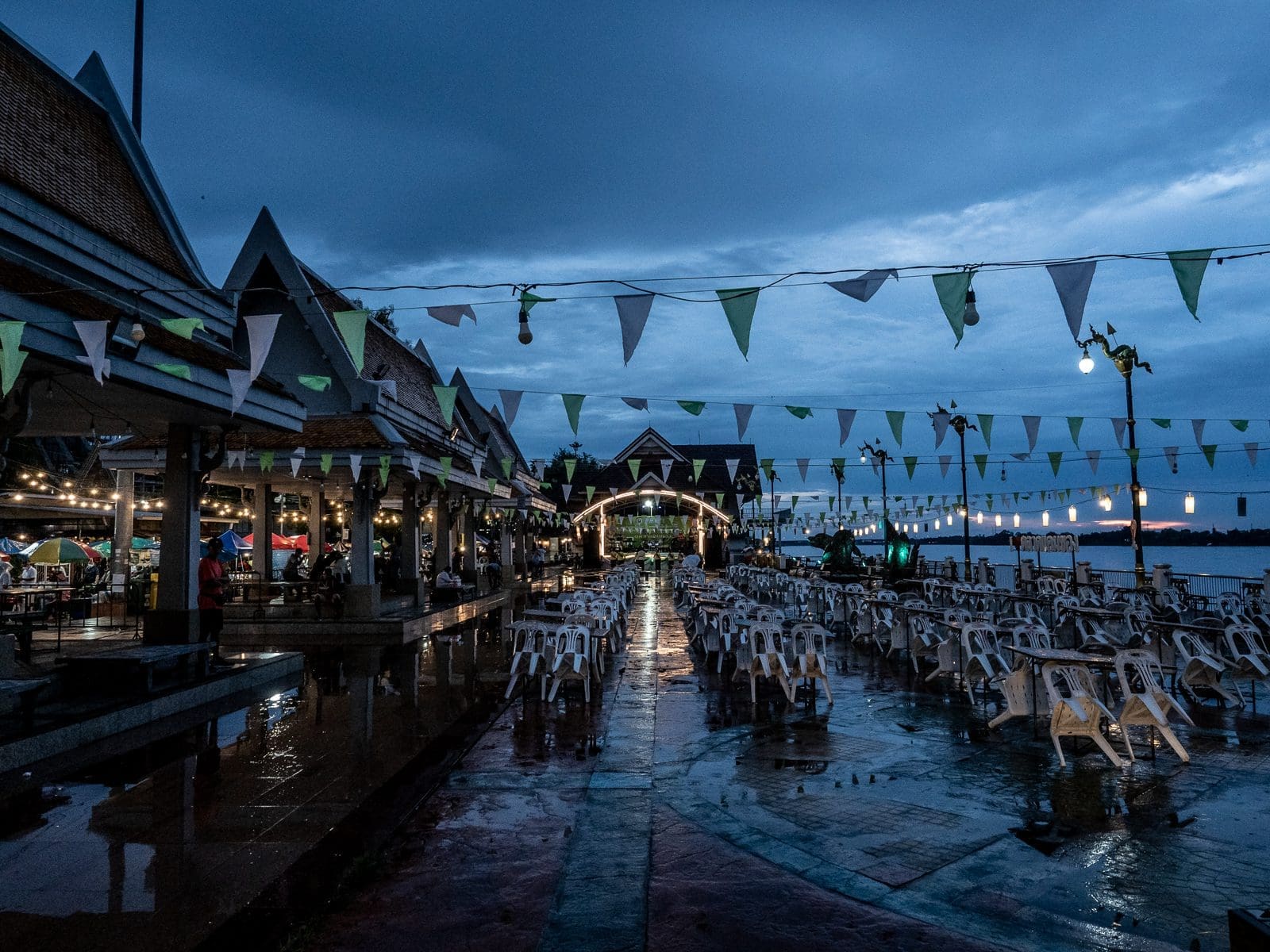
For nobody, it turns out. The festively dressed Riverside, which should be packed to the rafters with music and prayer songs, is empty. The Mekong is desolate in its mellow, dense colour. Rain falls on an empty Nong Khai, flooding the atmosphere with a blue that penetrates the grey clouds and colours the air with a sense of arcane melancholy. Strolling along the river, one encounters the few people who venture out in the rain, who remain at a distance as if in a dream, are glimpsed from the street sitting in cafés or engaged in their activities and enter the field of vision almost casually, remaining in the background. Nostalgia permeates the energy of the seen, making the unseen the story’s protagonist. And in this image of stillness and solitude, Riverside appears as a character encompassed by its atmosphere. The All subjugated to the Void.

